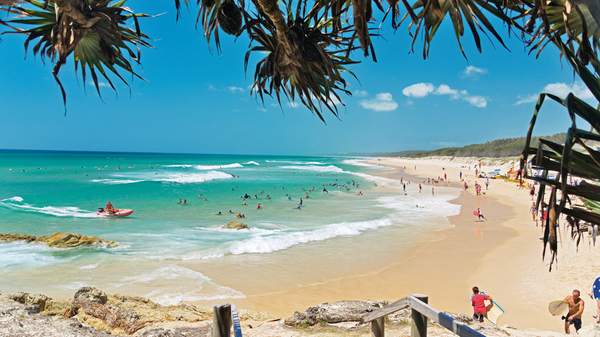Overview
Australian summers aren't known for their mild temperatures, but the past three months have been especially toasty. Sydney experienced a record-tying hot spell to kick off 2018. Melbourne endured its hottest day in five years, and then went and almost immediately smashed that top temperature by surviving its hottest day in ten years. A mid-January heatwave rolled across the country, hitting scorching maximums, while the entire first month of the year was deemed Australia's hottest ever.
If you've been feeling particularly hot and steamy, there's a good reason — all of the above instances of sweltering weather helped lead to the nation's warmest summer on record. The period from December to February also earned that label in New South Wales, Victoria, Western Australia and the Northern Territory, while Tasmania and South Australia persisted through their second-hottest summers ever. In Queensland, it was the state's fourth-warmest summer.
Both mean and maximum temperatures for the season were exceeded by significant margins, with each reaching nearly one degree higher than the past record, which was set over the summer of 2012–13. Even minimum temperatures soared, with New South Wales hitting its highest on record for summer away from the northeast and far west — and parts of southern inland Queensland, and central northern and eastern Victoria, doing so as well.
Here's how maximums looked across the country:
The findings were announced in the Bureau of Meteorology's official summer summary, which also notes that Greater Sydney's daytime temperatures were generally one to three degrees warmer than normal, that Greater Melbourne's maximums were between 1.5–2.5 degrees warmer than the long-term summer average, and that Brisbane experienced a record run of 46 days at or above 30 degrees, spanning from 10 January to 24 February. In short, your three months of seeking solace in beaches, pools and air-conditioning were completely justified.
According to Bureau climatologist Dr Lynette Bettio, "the heat we saw this summer was unprecedented". And as for reprieves from above, "rainfall was also well below average for many places, apart from areas in northern Queensland".
Summer might now be over; however that doesn't mean that it's time to pull out your jumpers — most of Australia is forecast to score a hotter-than-average autumn. How hot? For mainland Australian residents, there's an 80 percent chance you'll experience autumn temperatures that are a whole lot warmer than the median. Don't go packing away your pedestal fan just yet either.
Image: Tourism and Events Queensland
